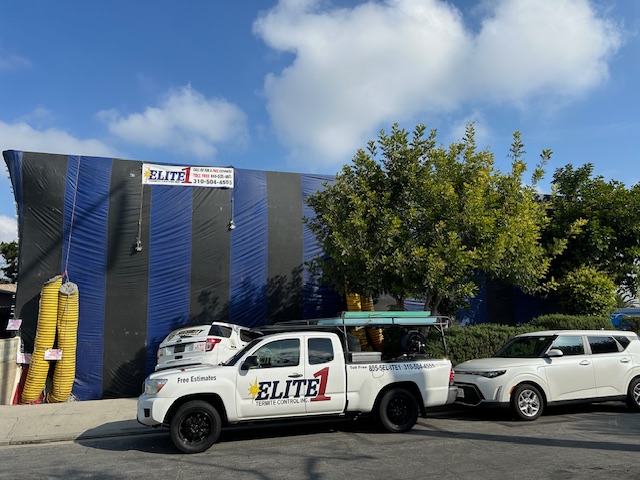The Role of Moisture Control in Preventing Termite Infestations
Moisture is one of the most overlooked yet critical factors contributing to termite infestations. Whether it stems from plumbing leaks, poor drainage, or humid crawlspaces, excess moisture creates the ideal conditions for termites to survive and thrive. Without it, many termite colonies struggle to establish or expand, making moisture control a foundational step in long-term prevention.
For homeowners and property managers, identifying and mitigating moisture issues can greatly reduce the risk of infestation. Since termites prefer dark, damp environments, eliminating these conditions before pests find them is far more effective than reacting after damage has occurred. This article outlines the relationship between moisture and termites, along with key strategies for protecting your property.

How Moisture Attracts Termites
Termites, especially subterranean species, require moisture to maintain their colonies and digest cellulose, the organic material found in wood. Moisture allows them to build mud tubes for safe travel and sustains the humid environment they need to survive.
Here’s why moisture is so attractive to termites:
- Softened, damp wood is easier to chew and tunnel through
- Moist areas offer ideal humidity levels for colonies
- Leaks and pooled water signal a consistent moisture source
- Water-damaged structures often go uninspected for pests
If you notice damp spots around the foundation, slow leaks under sinks, or standing water after rainfall, your home may already be inviting termite activity. These signs should not be ignored, particularly in climates where seasonal humidity increases pest pressure. The impact of the weather can significantly influence termite behavior, especially during rainy periods.
Common Moisture Trouble Spots Around the Home
The most vulnerable areas for termite infestations are often hidden from daily view. Crawlspaces, basements, exterior vents, and bathroom piping are all prime targets when moisture control is lacking. Because these areas are often unmonitored, small leaks or ventilation problems can go unnoticed for weeks or months.
Focus inspection efforts on the following:
- Crawlspaces with dirt floors or poor ventilation
- Basement corners with signs of efflorescence (white mineral deposits)
- Water-stained ceilings or sagging drywall
- Clogged gutters and downspouts that overflow onto the foundation
- Bathrooms or kitchens with persistent dampness or a mildew smell
Preventing long-term damage starts by sealing the envelope of your home. Foundation vents, sump pumps, and dehumidifiers can all play a role in reducing internal moisture and discouraging termites from setting up colonies nearby.
Preventive Steps for Moisture Management
Moisture control is not a one-time fix; it requires ongoing maintenance and environmental awareness. Simple upkeep tasks go a long way toward reducing risk and creating conditions that are inhospitable to termites.
To manage moisture effectively:
- Fix leaky pipes and faucets promptly
- Grade soil away from your foundation to ensure proper drainage
- Use exhaust fans in bathrooms and kitchens to lower humidity
- Clean out gutters at least twice a year
- Install vapor barriers in crawlspaces to prevent ground moisture from rising
For homes already prone to moisture issues, treatment plans like foam-based termite solutions offer precision application in damp areas, delivering treatment where traditional sprays might not reach effectively.
Why DIY Moisture Fixes Fall Short
While some moisture issues appear simple on the surface, many are part of a deeper structural or environmental problem. DIY methods like sealing cracks or placing fans often treat only the symptoms, not the cause. Without professional evaluation, it’s easy to miss hidden moisture that termites can still exploit.
DIY efforts may fall short due to:
- Missed sources of water intrusion behind walls or flooring
- Improper use of dehumidifiers that redistribute rather than remove humidity
- Failure to inspect the full perimeter of the home or crawlspace
- Inability to detect early wood damage or subtle mud tube activity
Comprehensive solutions begin with an expert inspection. Professionals use moisture meters, thermal imaging, and years of experience to uncover the less obvious vulnerabilities that DIY approaches overlook.
Long-Term Benefits of Moisture Control
Incorporating moisture control into your regular home maintenance plan pays dividends far beyond termite prevention. Dry homes are less likely to suffer from mold, wood rot, or structural degradation. In fact, controlling indoor humidity helps protect furniture, flooring, and electrical systems as well.
Consider the long-term gains:
- Reduced likelihood of termite infestations and pest activity
- Lower humidity improves air quality and comfort indoors
- Decreased need for repeated pest treatments
- Prevents costly water damage and home repairs
Most importantly, moisture control is an investment in your home’s integrity. Combined with routine inspections and timely repairs, it becomes a powerful tool in safeguarding both property value and peace of mind.
Stay Ahead of Moisture and Termites
Moisture may seem harmless, but it opens the door to silent threats like termites. Don’t wait for damage to appear. Contact Elite1 Termite Control, Inc. today for expert solutions that target both moisture and the pests it attracts.

